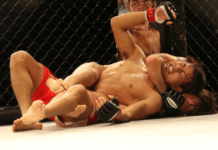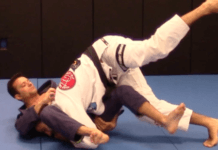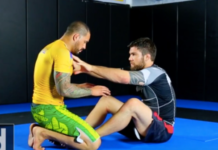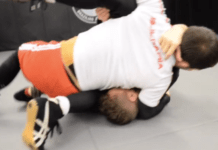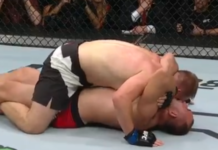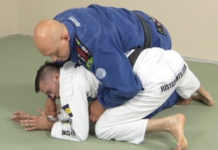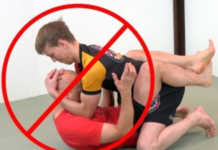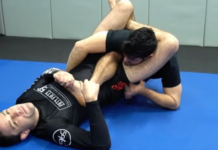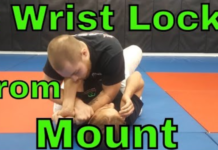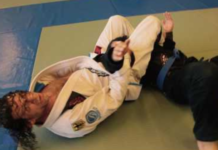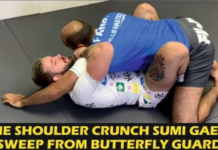One of the most basic moves in BJJ is the so-called omoplata. This is a shoulder lock that, if performed correctly, may break off the shoulder joint. This article will tell you all about how you can apply this move correctly.
The Omoplata setup
This move is most often performed from the bottom guard. All you have to do is a couple of things. You need to open your guard and throw one leg over one of the shoulders of your opponent. Then you need to place that leg under your opponent’s throat. Then you need to slowly begin to sit up at the side of your opponent while holding his waist with your arm. The omoplata setup will be then complete and all you will have to do now is to press your knee towards the ground. This will result in an immediate tap out, even if your opponent is very flexible.
Defending the Omoplata
There is a phase in almost every BJJ submission move after which the possibility of escape is very minimal. But typically, in most cases, you will be able to evade any move if you respond quickly and precisely. Such is the case with the omoplata. If you can sense that your opponent is trying to perform the omoplata on you, then it will be a lot easier for you to defend it. Just don’t let him throw his leg over your shoulder in the first place and you will be fine.
But what happens if your opponent has already thrown his leg over your shoulder and is continuing with the other parts of the move? Well, if he is not careful enough, you may be able to escape the move in one additional way. All you need to do is a quick front flip and after this, you will be able to pull out your arm. Just be careful not to end in an armbar when you do this. And this is the main reason as to why it’s very important to hold your opponent at the waist or at the belt when you’re doing the omoplata so as to prevent him from doing the evasive maneuver of the front flip.
Gi vs no-gi Omoplata
The omoplata is a very versatile move. This means that you can perform it both with the gi on and without one. Of course, some practitioners find it a lot easier to do this move with the gi on because of the fact that they can use grips for preventing the opponent to escape. Moreover, there is no element of “slipping” from the sweat that begins to accumulate in no-gi scenarios.
To be fair, you will need to do a fair bit of drilling to perform the move with or without the gi. This is a basic move and it’s highly effective but this doesn’t mean that you can perform it every time. Moves like the triangle and the Kimura are a lot simpler in this sense and they involve fewer steps. However, the omoplata involves a number of steps that you must perform precisely if the move is to work in the end. If you fail at one step of the move then everything will fall apart.
But it will all be worth your while if you begin practicing the various steps of the omoplata. With time, you will see that it gets easier and easier to perform it on your unsuspecting opponents. And when you will be able to perform the move even though your opponents are expecting it – then you will have reached a level of mastery over the omoplata.
What remains for you to do is to begin practicing the move. Every once in a while, try to do it on the mats. You’ll be surprised at how often it works, even though it may seem like a complicated move at first. Have fun with it!
Check also:
- Gogoplata Technique Breakdown
- Arm Triangle Choke: Variations and choke defense
- Kneebar 101: How to do, defend and dangers of the move
- Heel hook: How to Do and Defend this Leg Lock
- Darce Choke: Origin and Mechanism behind Choke

